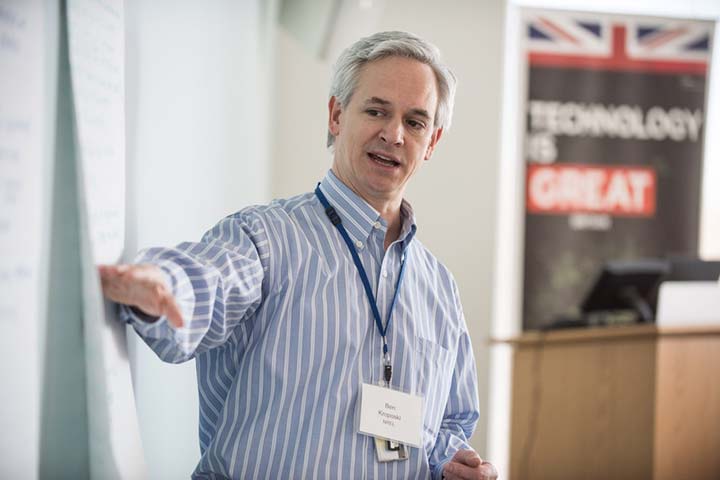Q&A with Ben Kroposki: A Grid Visionary
Research at the National Renewable Energy Laboratory (NREL) is often creating solutions 10 to 20 years ahead of widespread deployment. Power Systems Engineering Center Director Ben Kroposki is looking nearer-at-hand to drive current research directions. Kroposki has a record of staying in front of the most important trends in energy systems—solar photovoltaics (PV), microgrids, renewable electrolysis, and now a full transition to a renewable energy power system.
We talked with Kroposki about where NREL is taking the grid, right now and in the far future.

You’ve been around renewable energy systems your entire career. What motivated you down that path?
While I was an undergraduate at Virginia Tech, I took a course on alternative energy systems that covered wind, hydro, solar, and other types of energy. The course was taught by Saifur Rahman, a leader in power systems. That course sparked my interest in renewable energy, and although there weren’t many jobs in renewable energy 25 years ago, my experience helped me get a job evaluating PV modules at NREL. I saw a lot of technology development in how to make PV more reliable, but my background and interest was always in power systems and how we could integrate solar and wind into the grid.
At NREL you helped imagine the Energy Systems Integration Facility (ESIF), which has become the nation’s central resource for grid testing. What experimental capability is needed next?
We as a research institute want to do experiments on a much larger scale. We want to replicate as close to the real world as possible—we’re expanding our experimental work to the Flatirons campus, where we have several hundred acres, an entire substation, distribution circuits, etc. ESIF is pretty close to replicating what you see in the real world, but it can’t match the complexity of devices or true physical scale.
We’re also thinking about how things communicate in the real world. We want to install the actual communications infrastructure like 5G and new WiFi capabilities. NREL has been a pioneer with remote hardware-in-the-loop testing, and we can bring together different sites and different labs as if they were one integrated system. We want to go significantly larger in our experimental capabilities
What current research at NREL is likely to have an outsize impact on our grid?
The topic that I’ve been focused on for the past few years is autonomous energy grids: In the future, when it’s the most natural thing that everyone has PV on their roof, an electric vehicle and small backup battery in their garage, and a smart home, how are people going to control tens of millions of devices? Today, we have large-scale, centralized power generation, but 20 years in the future, we will have to control decentralized energy generation and sharing.
What is the current progress of autonomous energy grids?
Back a year or so ago, we were doing little trials, like the vineyard in California with 10 or 15 devices connected. We’ve recently realized control of 100 devices in the ESIF, and we’ve simulated up to millions of devices. So we know this technology works. Now we’re looking to expand the hardware evaluations at the Flatirons campus to thousands of real devices, so we can develop grid solutions on circuits that you would see in the real world.
NREL’s new partnership with Exxon Mobil will involve research at the ESIF. What do you expect from such a large, ongoing collaboration?
We’ve been having great discussions with Exxon. They’re very interested in this transition to future systems that heavily integrate wind and solar, vehicles, and building loads. They see us as having expertise in this space and as having an unbiased perspective about how technologies will integrate into the market. They are an energy company at heart, and NREL has the ability to map out transitional pathways and opportunities with them.
You see a lot of opportunity in the grid space. What are the limits ahead for renewable energy?
We’re working heavily on the technical limits to 100% renewable-based systems. Once we go beyond around 80% renewable energy, then we will need to get creative and study the full suite of storage techniques like shifting loads, pumped hydro, creating hydrogen from electrolysis. Getting to very high renewable energy levels will require detailed thought around how we move energy around.
We also need to think about how to educate and train the next generation of workers in this space. I’ve been working with Colorado School of Mines and University of Colorado-Boulder, where we take the research findings at NREL and add to the educational programs at those schools. We can make significant changes to the sector by training engineers now.
Learn more about NREL's work in grid modernization.
Last Updated May 28, 2025
